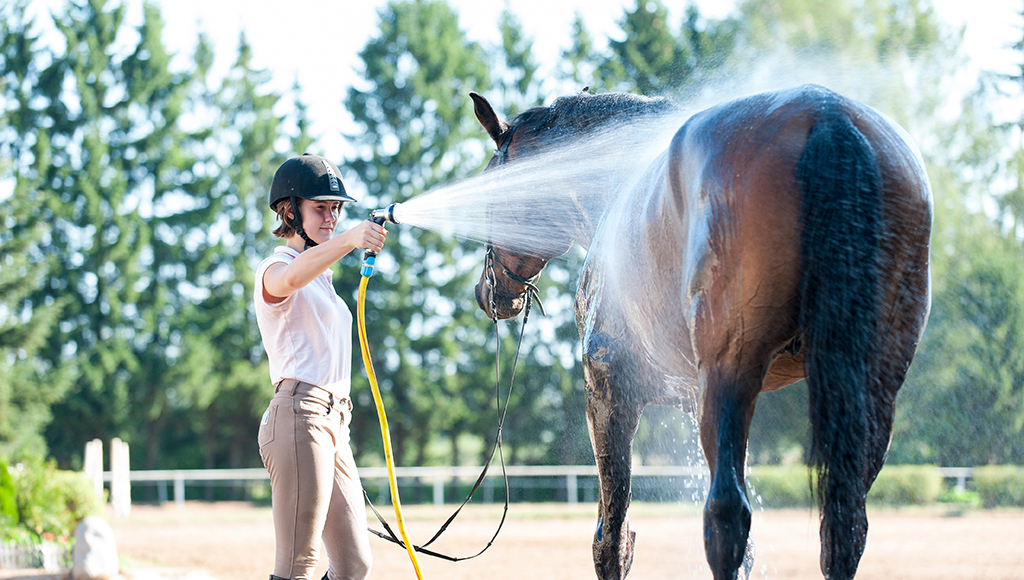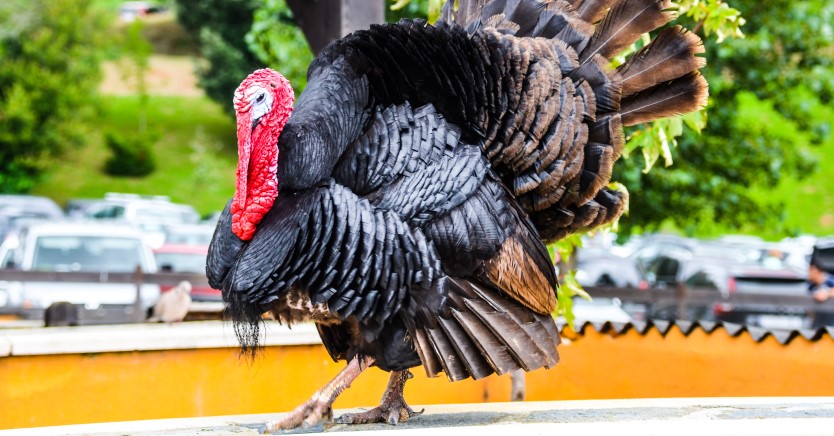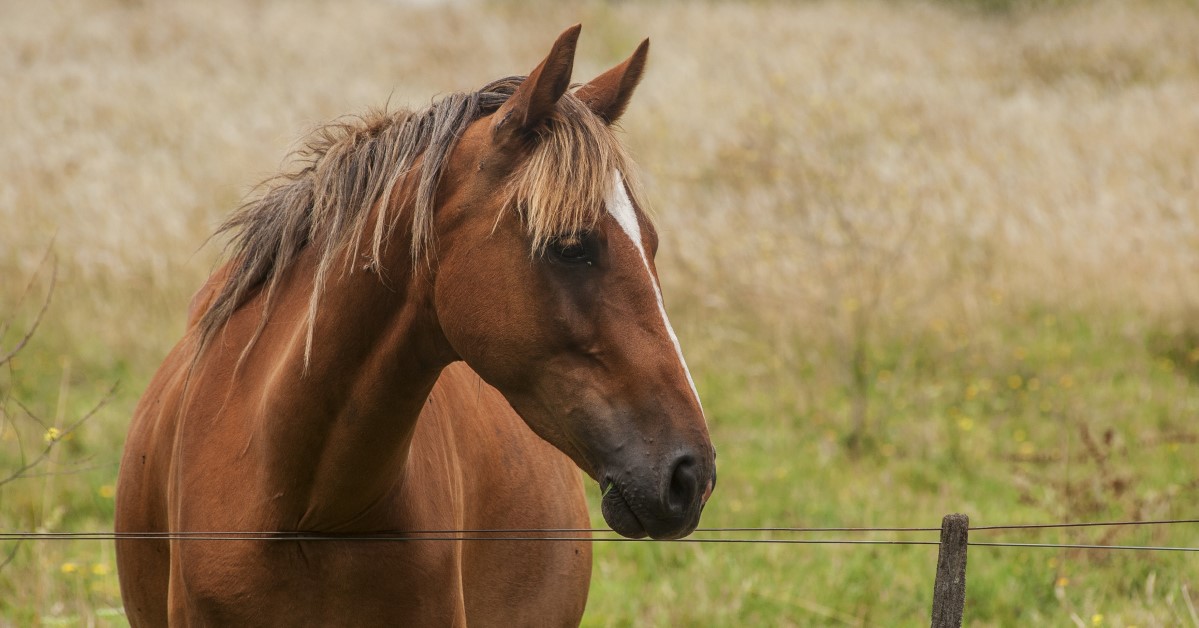Preventing Heat Stroke in Horses
Strategies for helping our equine friends stay cool in hot weather.

It's easy to enjoy warm weather when you can jump in a pool or step inside a cool, air-conditioned room the moment the heat gets to be too much for you. It's also easy to forget how dangerous extremely warm temperatures can be for our beloved animals. Horses can suffer from heat stroke too. Here are some things you can do to help prevent heat stroke for our equine friends:
- Provide ample fresh clean water. Check daily that buckets or troughs are not contaminated with bird droppings, insect larvae, chaff, or algae growth. Try to keep the water cool. Horses may not want to drink warm water. Ponies and foals may have trouble reaching to the bottom of a shallowly filled trough. Make sure everyone in your paddocks can reach the water.
- Sponge or hose down the large blood vessels along the inside of the legs, belly and neck. Don't spray the horse's face or get water in its ears--sponge them down gently.
- If you must work your horses hard try to schedule your session for early morning or late evening when it is cooler.
- After riding or driving in hot weather cool your horse down slowly. Loosen girths or belly bands immediately after a work out. Offer sips of cool, not cold water and walk the horse slowly. Muscles are more apt to stiffen if the horse is allowed to stand and moving muscles dissipate heat better than stationary ones.
- Consider using electrolytes if your horse is sweating hard such as when the combined humidity and air temperature exceeds 104 degrees Fahrenheit or your horse will be working hard (a long trail ride or competition). Electrolytes replace salts lost in sweating. They are similar to human sport drinks. You can put electrolytes in the horse’s feed, or use a large ended syringe to squirt into the mouth. Use electrolytes made for horses. Electrolytes made for other livestock may be unsuitable.
- Make sure there is a place for your horse to avoid the sun—either a building or a shade tree.
- Clip horses with heavy coats. Be careful not to clip too close however, since exposed skin can sunburn.
- Apply zinc oxide cream to horses with pink noses to prevent and treat sunburn.
- Mid to late summer weather often means that grass growth slows down and pasture quality declines. Make sure your horse is getting enough fodder and consider supplementing with hay if necessary. Horses need energy to stay warm and cool. Adjust your feed mixture if your horse begins to loose condition in hot weather.
- During very hot weather consider keeping your horses stabled during the day, and let them out at night.
- If your barn becomes hot and stuffy consider setting up a fan. Make sure the horse can not reach the cord or fan itself, it can’t be tipped, and that it is plugged into a ground fault interrupt electrical receptacle if there is any chance of electrical wiring coming into contact with moisture, such as a spilled water bucket or a curious horse’s mouth.
- If hot weather brings clouds of biting insects that keep your horse pacing and stomping try using fly sprays, masks, and sheets. Water based fly sprays may be less harsh on the coat hairs as oil based ones can cause bleaching.
Whether you are at home riding, or competing a bucket full of ice water and old towels can help refresh you and your horse. Place them over your horse’s neck, and your own. A drop of lemon, mint, or citronella essential oil on the people towels is an energizing touch. - Take care of yourself. If you get overheated and tired you may not be able to take care of your horse effectively. And you could miss warnings that your horse itself is showing signs of heat stress.
Heat stroke can happen to horses whether they are working hard, or standing in stuffy stables or traveling in trailers. Call a vet and take immediate action if your horse exhibits any of these symptoms:
- Elevated respiration in an inactive horse (normal range is 4 to 16 breaths per minute).
- Elevated pulse in an inactive horse, or pulse that does not drop after several minutes or climbs once exercise has stopped.
- Profuse sweating or no sweating at all.
- Elevated body temperature above 103F.
- Irregular heart beat known as ‘thumps’.
- A depressed attitude.
- Dehydration. Test for this by observing your horse’s flanks. If they look caved in, he is probably dehydrated. Pick up a pinch of skin along your horse’s neck. If the skin snaps back quickly the horse is sufficiently hydrated. If the pinched area collapses slowly the horse is dehydrated.
What to Do Until The Vet Arrives
Use shade, cool water, breezes or fans as best you can. Stand your horse in a pond or stream. Sponge or spray the large blood vessels along the inside of the legs and belly. Offer sips of water.Ready to start saving money on pet wellness care?
Then take a look at Mint Wellness, the pet wellness plan that provides fast reimbursement on routine pet care. Save on vaccinations, wellness exams, preventatives, dental, and more!
Learn More

